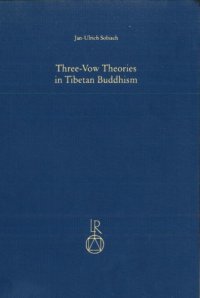
Ebook: Three-Vow Theories in Tibetan Buddhism: A Comparative Study of Major Traditions from the Twelfth through Nineteenth Centuries
Author: Jan-Ulrich Sobisch
- Series: Contributions to Tibetan Studies
- Year: 2002
- Publisher: Dr. Ludwig Reichert Verlag
- Language: English
- pdf
Although all Tibetan Buddhist schools accepted, together with the three vehicles of auditors (sravakas), bodhisattvas, and Tantric adepts, the existence of three systems of vows, the question about whether these three vows coexist, and if so, how they coexist, often became the subject of intense scholastic discussion and even of sharp controversy. At least as early as the twelfth century, against a background of a great majority of Tibetan Buddhists holding all three vows, Tibetan religious masters began not only to describe the moral codes within the framework of each respective vehicle, but also to discuss the possibility-or indeed, the necessity-for a single person to practice all three systems of vows together. The related doctrinal discussions continue down to the present day. Its contributions form the as-yet largely unexplored " Three Vow" (sdom pa gsum) literature, constituting a distinct genre of Tibetan literature (the sdom gsum bstan bcos) and also the topic of related discussions in writings of other genres such as instructions (zhal gdams, etc.), replies (zhus lan or dris lan), and notes (zin bris, etc.).
Download the book Three-Vow Theories in Tibetan Buddhism: A Comparative Study of Major Traditions from the Twelfth through Nineteenth Centuries for free or read online
Continue reading on any device:

Last viewed books
Related books
{related-news}
Comments (0)